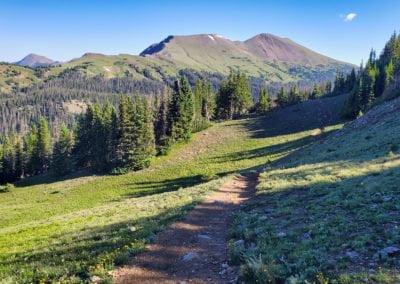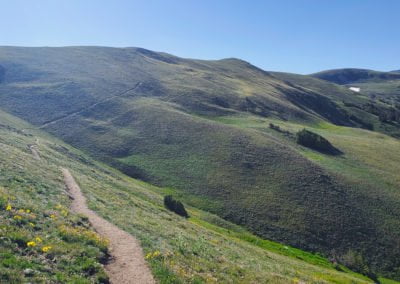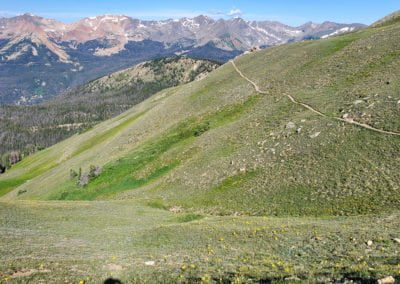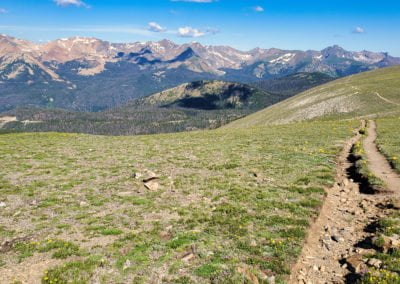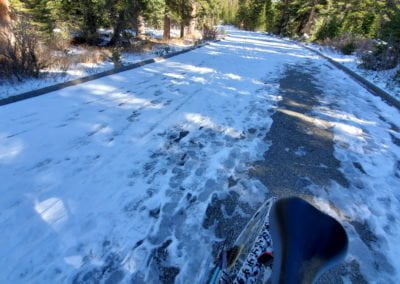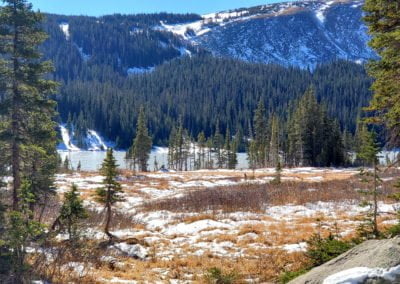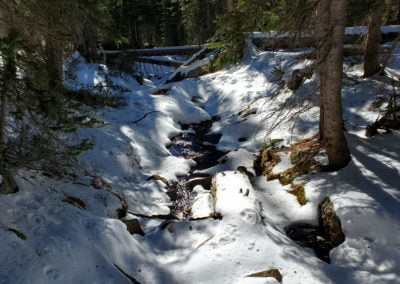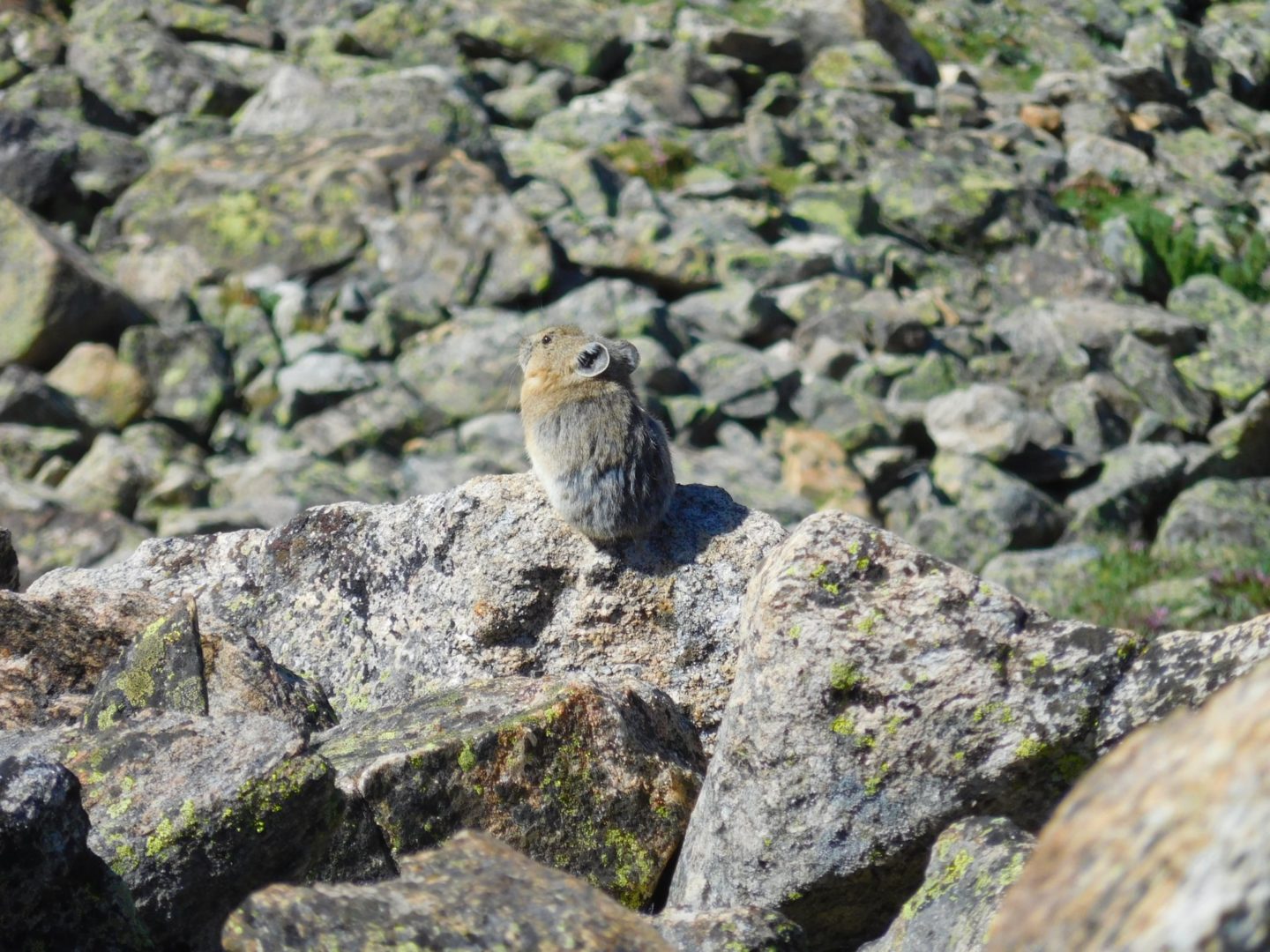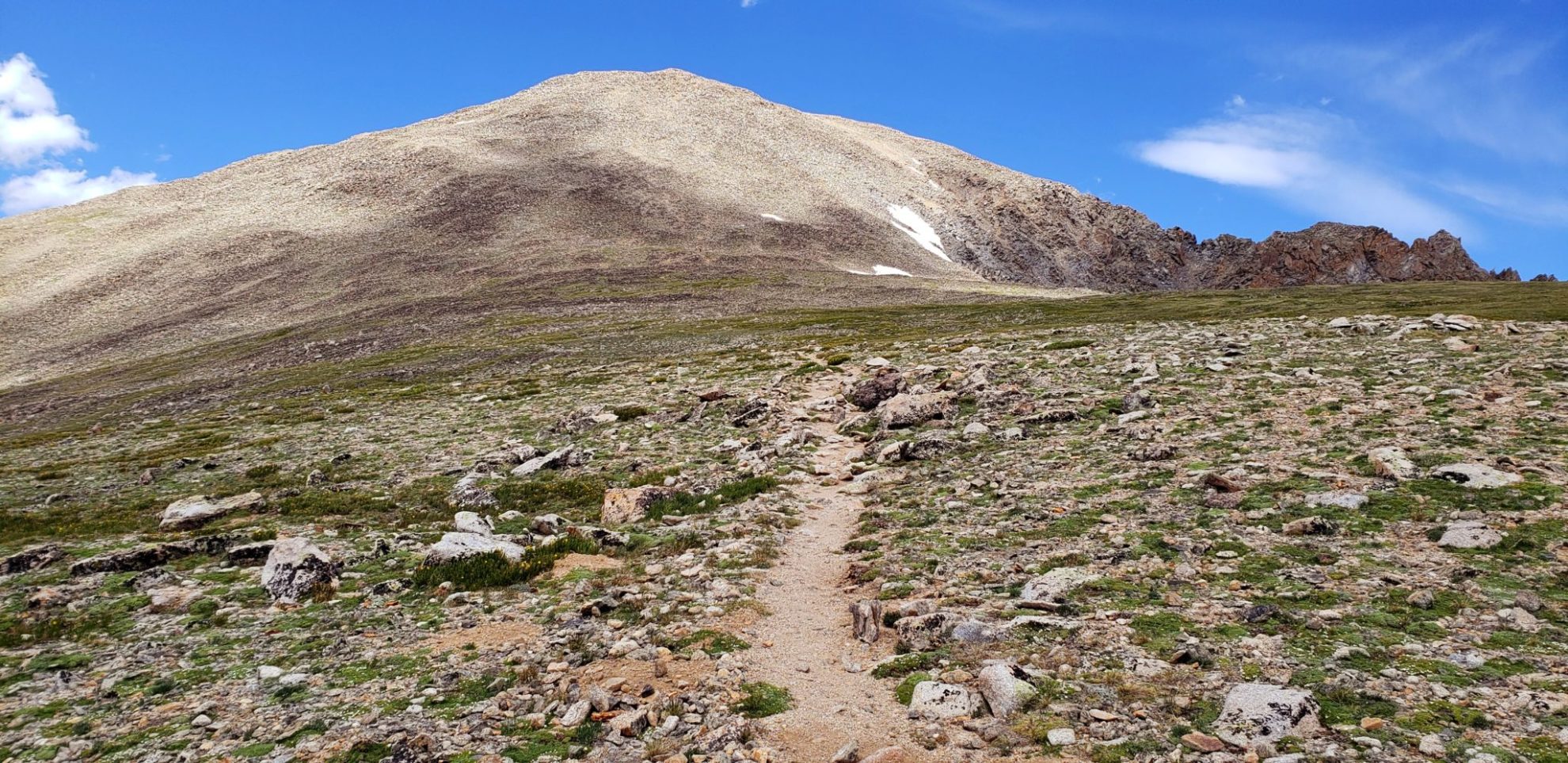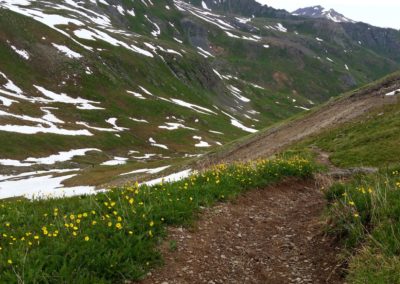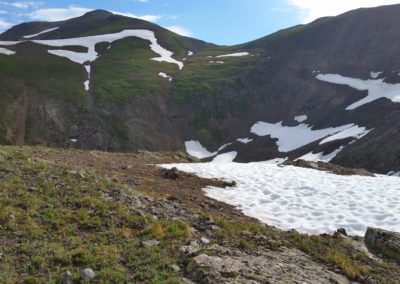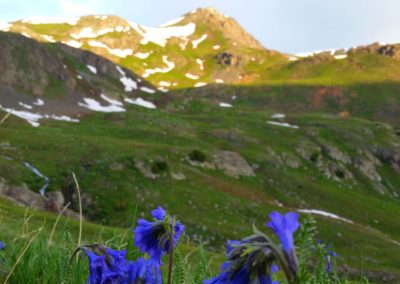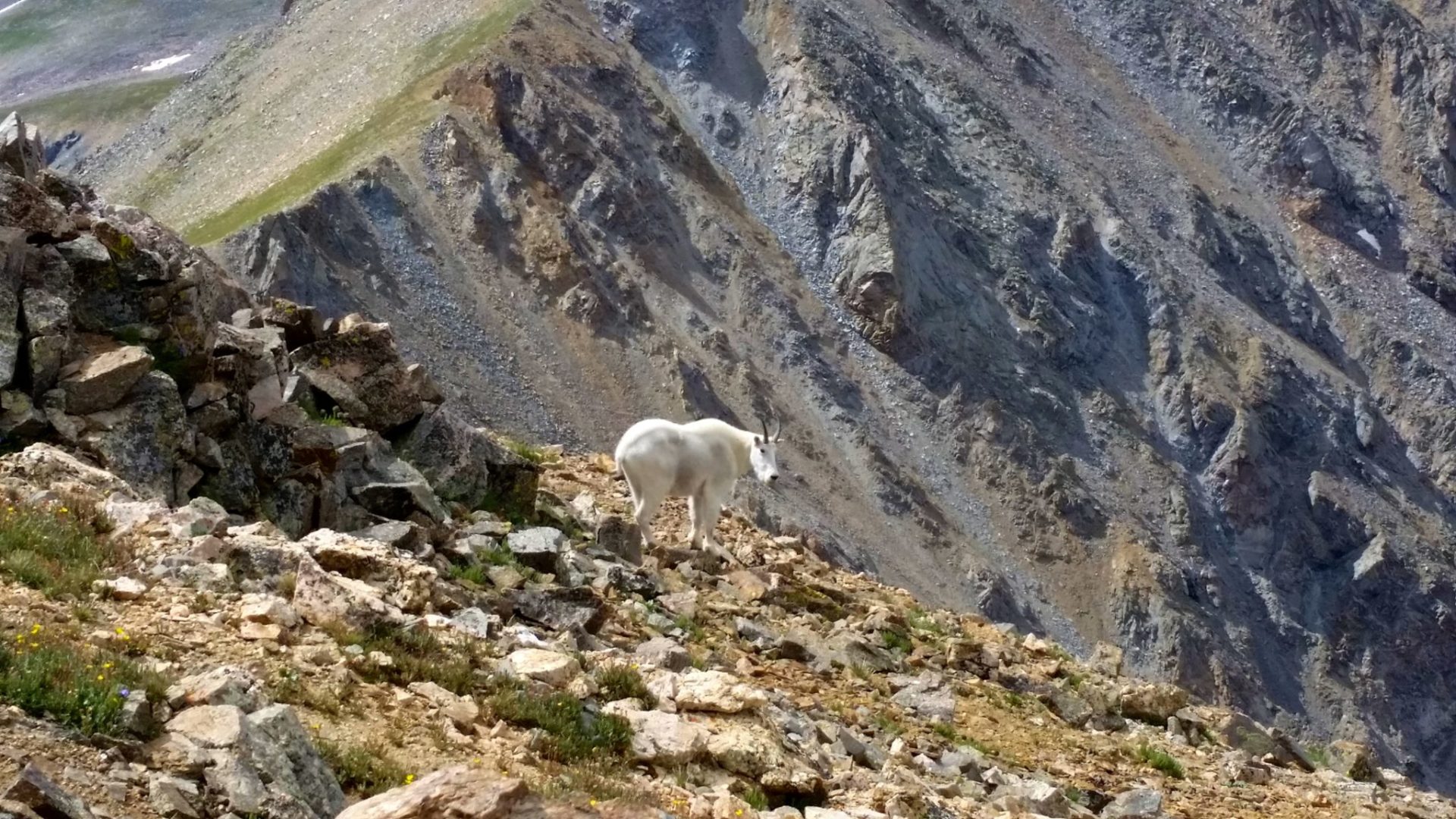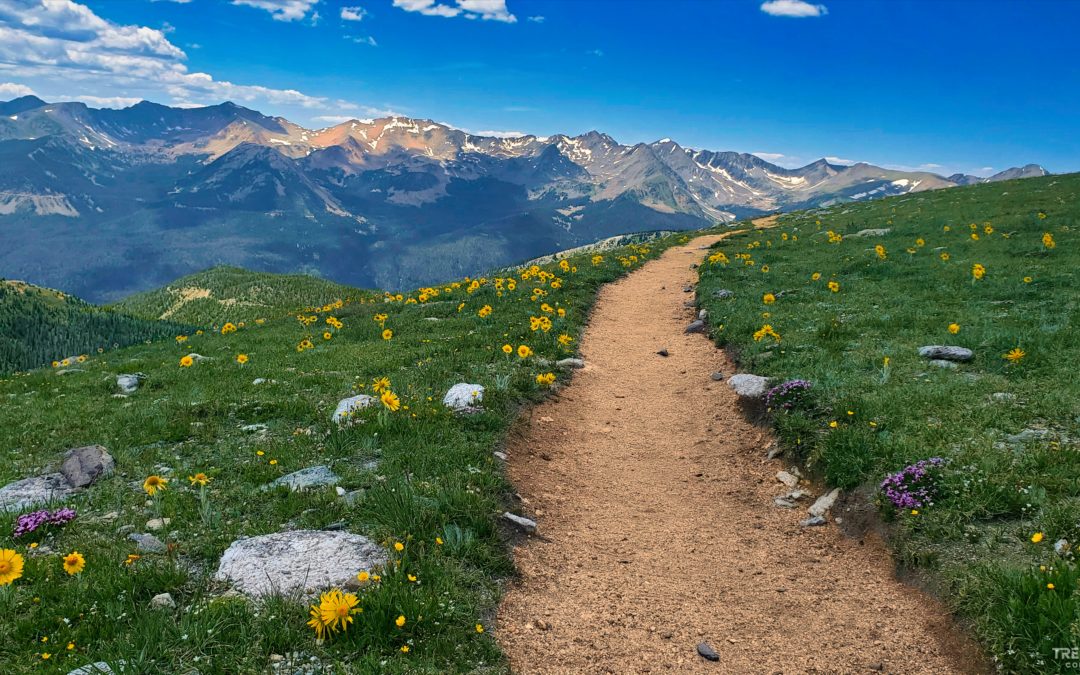
Mt Ida (12,880′), Front Range
Mt Ida (12,880′), Front Range
The Mt Ida trail, at Milner Pass, is one of Rocky Mountain Park’s most scenic alpine treks. The trail has spectacular views that include tundra flats, panoramic views across the Never Summer Mountain Range, and 360 degree views of Rocky Mountain National Park from the summit.
Officially there is no trail to the summit, but well-established hiking paths make the trek straightforward. Be aware that many cairns and social trails begin to spindle off the main route near the summit, which can be confusing. However, since you’re above treeline, it shouldn’t be hard to piece together the final part of the route.
Trail Stats
- Trailhead: Milner Pass
- Round trip: 10.2 miles / 16.4 km
- Elevation: 10,780′- 12,880′ / 3,286 m – 3,926 m
- County: Larimer / Grand
- Agency: National Park Service
- Nat’l Park: Rocky Mountain
Trail Pictures
The Mt Ida trail follows the Continental Divide the entire way
The Mt Ida trail follows the Continental Divide the entire way
Julian Lake near with Grand Lake and Shadow Mountain Lake in the distance
Julian Lake near with Grand Lake and Shadow Mountain Lake in the distance
The trail follows the Continental Divide (Mt Ida on right)
The trail follows the Continental Divide (Mt Ida on right)
The trail stretch’s off into the distance along the tundra
The trail stretch’s off into the distance along the tundra
GPX with Elevation
Video Tour
Trail Directions
Start from Poudre Lake Trailhead at Milner Pass (Continental Divide) and head northeast toward Poudre Lake. Hike past the southern shore of Poudre Lake and follow steep switchbacks through the forest. Keep to the right and follow the sign at the first junction. Ascend up a deep forest, heading to the western side of the ridge as you make your way to tree line.
Once above tree line, the views of The Never Summer mountains to the northwest are incredible. Continue over intermittently steep slopes and flat trail. Eventually boulder fields will begin to appear, so it may be tricky to find a steady trail to the top. Stay to the right on the way up to avoid the more difficult sections and the cliffs. The summit provides beautiful 360 degree views of Rocky Mountain National Park.
Trailhead Directions




